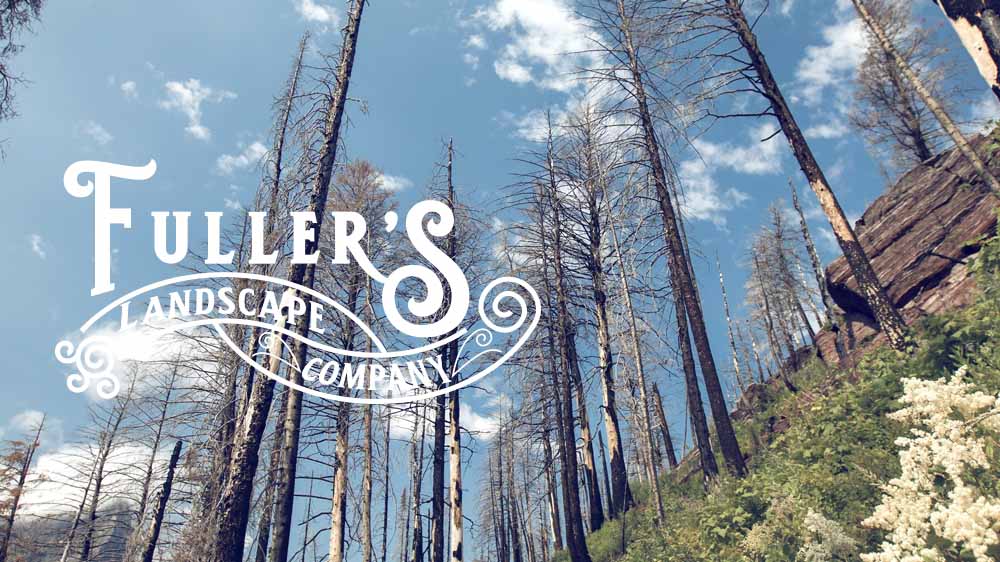
In the aftermath of a wildfire, the landscape can be transformed into a perilous terrain, where danger lurks around every corner. Safety considerations are paramount when embarking on post-wildfire landscaping, as protecting lives and property takes precedence in the recovery process. This article delves into the critical aspect of ensuring safety first, highlighting the need to make the area safe for access and to mitigate immediate hazards such as unstable slopes, dead trees, and smoldering embers. Consulting with local authorities and emergency services becomes a crucial step to obtaining clearance and assessing potential dangers comprehensively.
Understanding the Aftermath
Wildfires leave behind a changed landscape, often marred by instability, charred remains, and the potential for continued danger. Before any restorative efforts can begin, it is essential to understand the specific safety hazards that may exist:
- Immediate Hazards: Wildfires can leave behind a landscape fraught with immediate hazards, which include but are not limited to:
a. Unstable Slopes: The intense heat of a wildfire can destabilize the soil and lead to the potential for landslides and erosion. Areas with steep slopes are particularly susceptible to instability.
b. Dead Trees: Trees that have been scorched by the fire may still stand but pose a significant risk of falling. These dead trees are weakened and can collapse, endangering lives and property.
c. Smoldering Embers: Hidden pockets of smoldering embers can remain in the debris, waiting for the right conditions to ignite and start a new fire. Even a small ember can rapidly escalate into a significant blaze.
Taking Proactive Measures for Safety
To ensure that the area is safe for access and to mitigate these immediate hazards effectively, the following proactive measures must be taken:
- Assessment: Before any work begins, a thorough assessment of the landscape is imperative. Engage experts, such as forestry specialists or certified wildfire assessors, who can identify unstable slopes, dead trees, and potential fire hazards.
- Clearance from Local Authorities: It is crucial to consult with local authorities and emergency services to obtain clearance for the work. Local authorities are well-versed in the unique dangers posed by post-wildfire landscapes and can guide the specific safety measures required.
- Emergency Services: Collaborate closely with emergency services. Firefighters and other emergency responders can help identify and neutralize smoldering embers, reducing the risk of fire rekindling.
- Clearing Dead Trees: If dead trees are identified as potential hazards, it is essential to engage professionals to safely fall and remove them. Do not underestimate the danger these trees pose, as their weakened structure makes them unpredictable.
- Erosion Control: In areas with unstable slopes, it is essential to implement erosion control measures promptly. Silt fences, retaining walls, and revegetation are common approaches to stabilize slopes and prevent erosion. You may want to begin building retaining walls.
- Ember Removal: Addressing smoldering embers is crucial for preventing a secondary fire. Firefighters or trained personnel should meticulously inspect and extinguish any hotspots. This step is fundamental in ensuring the long-term safety of the area.
Maintaining Safety Throughout the Process
Safety considerations do not end with the initial assessment and clearance. Safety must be maintained throughout the post-wildfire landscaping process. The following precautions are vital for safeguarding lives and property:
- Regular Inspections: Conduct regular inspections to identify any new hazards that may emerge as the landscape evolves. Wind, rain, and temperature fluctuations can alter conditions, requiring ongoing vigilance.
- Safety Equipment: Ensure that all personnel involved in post-wildfire landscaping have access to the necessary safety equipment, including personal protective gear and tools designed for the specific hazards of the environment.
- Communication: Maintain open lines of communication with local authorities and emergency services throughout the project. This allows for immediate response to any unforeseen developments and ensures that the work remains aligned with safety guidelines.
- Education and Training: Properly educate and train all individuals working in post-wildfire landscaping. Knowledge of potential hazards and the correct response in the event of an emergency is paramount.
In the aftermath of a wildfire, safety is not just a consideration; it is a fundamental requirement.
Protecting lives and property during the post-wildfire landscaping process is a moral and practical imperative. The key to success lies in understanding the potential hazards, collaborating with local authorities and emergency services, and taking proactive measures to mitigate risks. Moreover, maintaining safety throughout the project is equally critical, requiring regular inspections, safety equipment, ongoing communication, and comprehensive education and training. By prioritizing safety in post-wildfire landscaping, we not only restore the beauty and functionality of the land but also ensure a safer and more resilient environment for all.
Get in touch with us today if you want to learn more about landscaping your home post-wildfire in West Kelowna or Kelowna. We’re here to help you get safely on your way.
